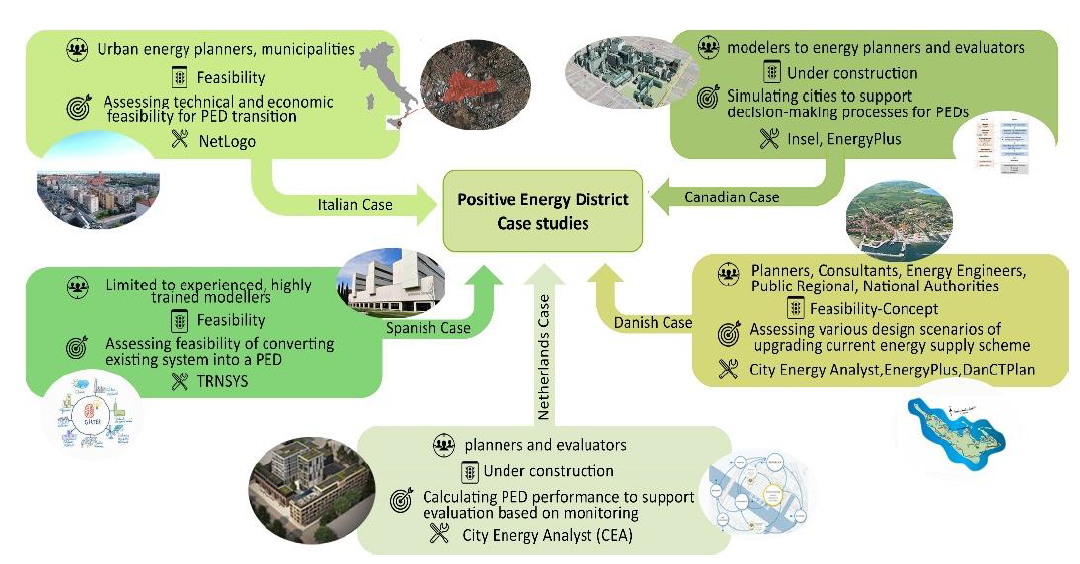ATELIER project partners AUAS, DEUSTO, CARTIF and PSI shared their knowledge and experience on Positive Energy Districts in various conference papers submitted to the Sustainable Energy in Buildings (SEB-21) conference in September 2021.
The aim of the International Energy Agency’s Energy in Buildings and Communities Programme (IEA EBC) Annex 83 – Positive Energy Districts is to create a shared in-depth definition and to develop the key concepts of PEDs, explore and develop the methods and tools needed to support the planning and decision-making process and understand the technologies related to the realisation of Positive Energy Districts. Demonstration cases such as those in ATELIER, with its two Lighthouse Cities in Amsterdam and Bilbao, provide valuable experience and data on Positive Energy Districts. The Annex 83 thus held a special session on Positive Energy Districts at the Sustainable Energy in Buildings (SEB-21) conference which took place in Split, Croatia organised by KES International on 17 September 2021.
For example, Amsterdam University of Applied Sciences (AUAS) contributed to the publication “Reviewing challenges and limitations of energy modelling software in the assessment of PEDs using case studies” by Alberto Belda, Fundación CARTIF, Emanuela Giancola, Department of Energy, CIEMAT, Karen Williams, Amsterdam University of Applied Sciences, Sanam Dabirian, Soroush Samareh Abolhassani and Ursula Eicker, Concordia University, Muhyiddine Jradi, University of Southern Denmark, Rosaria Volpe and Alberto Fichera, University of Catania. The aim of the paper is to collect and analyse the challenges and limitations of energy modelling software for assessing PEDs through five case studies in Italy, Spain, The Netherlands, Denmark and Canada. The five case studies use different approaches and tools to undertake PED energy modelling. The paper provides a summary of the main tools used, their target audience or stakeholders to which the analyses are addressed, the status of the PEDs (e.g. feasibility study, under construction), and main purpose of the modelling study.
The limitations and challenges of the case studies were assessed using thematic analysis. The main challenges and limitations identified were synthesised into eight overarching thematic categories, common to all cases irrespective of the approach or the modelling tools used, these comprise: input data, meteorological data, geometrical data, building energy modelling, energy system modelling, user interface and complexity, modelling process and accuracy and data integration. The main challenge identified is associated with input data, particularly around availability and access to accurate input data and a lack of comprehensive data on building attributes. Energy system parameters and building energy modelling jointly ranked second in importance in terms of limitations and challenges. The main limitations relating to energy system parameters relates to building definitions and typologies and the manual customization of parameters. Building energy modelling, customization requirements and a lack of energy system characteristics are also identified as key challenges.
PEDs tends to involve a high number of multi-domain interactions and corresponding reciprocal exchanges with energy systems in buildings. Therefore, developing suitable simulation strategies is important for modelers, by carefully matching the performance assessment objectives with the capabilities and limitations of the different models and simulation tools available.
Author: Karen Williams, Amsterdam University of Applied Sciences
Picture Credits: Amsterdam University of Applied Sciences
